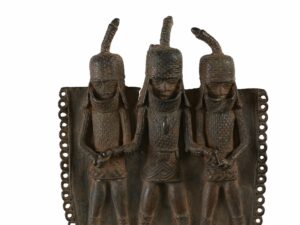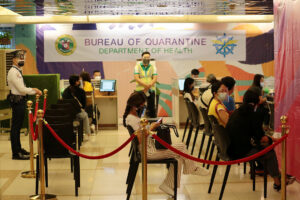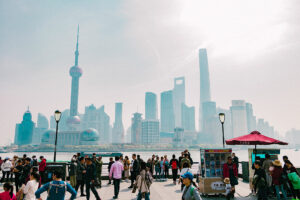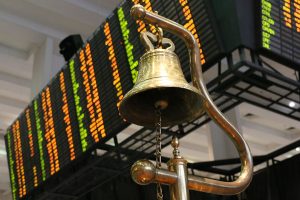Art News: Philosophy of Bruce Lee; antiquities returned to Cambodia, Benin

SEATTLE/NEW YORK/LONDON — After a pandemic-induced delay, a permanent exhibition focused on Bruce Lee’s philosophy is opening at the Wing Luke Museum of the Asian Pacific American Experience in Seattle, with support of the Bruce Lee Foundation.
His daughter Shannon Lee, who oversees the foundation, told Reuters that the exhibit, “Be Water, My Friend,” was as an immersive extension of her research into her father’s life as a philosopher.
“I didn’t feel like everybody was getting the full picture of the human being. And it’s really part of my mission for people to understand actually what level of philosopher he really was,” Ms. Lee said of the project, which is housed in an unassuming historic building in the city’s Chinatown-International District.
She said she remembers little glimpses of life with her father before he died when she was four: him holding her on his lap and playing, visiting him on set at Golden Harvest Studios, and their home in Hong Kong.
“They’re very meaningful moments to me, but they’re just brief little touch points,” Ms. Lee recalls of those early memories. “But the unlimited part of my memory is that I have a real sense of him, him energetically, him, the way he made me feel, the way I felt in his presence. His energy, his love, his adoration, his sense of safety, being with him.”
Her father’s collection of 2,800 books — spanning martial arts theory, filmmaking, and philosophy — will remain at the museum permanently, along with other keepsakes in a separate exhibit.
Seattle is rich with the legacy of Bruce Lee: Ruby Chow restaurant where he once worked, the University of Washington, where he studied philosophy and met his wife, Linda Lee Cadwell, and ultimately where he was buried in 1973 at Lake View Cemetery in the Capitol Hill neighborhood.
LOOTED ANTIQUITIES RETURNED TO CAMBODIAThe United States will return to Cambodia 30 looted antiquities, including bronze and stone statues of Buddhist and Hindu deities carved more than 1,000 years ago, US officials said on Monday.
The Southeast Asian country’s archaeological sites — including Koh Ker, a capital of the ancient Khmer empire — suffered widespread looting in civil conflicts between the 1960s and 1990s. Cambodia’s government has since sought to repatriate stolen antiquities sold on the international market.
Damian Williams, the top federal prosecutor in Manhattan, said the items being returned were sold to Western buyers by Douglas Latchford, a Bangkok dealer who created fake documents to conceal that the items had been looted and smuggled.
Mr. Williams said the antiquities, including a 10th century sandstone statue depicting the Hindu god of war Skanda riding on a peacock, were voluntarily relinquished by US museums and private collectors after his office filed civil forfeiture claims.
“These statues and artifacts … are of extraordinary cultural value to the Cambodian people,” Mr. Williams said at a ceremony in Manhattan announcing the return of the antiquities.
US prosecutors in 2019 charged Mr. Latchford, a dual citizen of Thailand and the United States, with wire fraud and smuggling over the alleged looting. He died in Thailand in 2020.
The antiquities will be displayed at the National Museum of Cambodia in Phnom Penh, Cambodia’s US ambassador Keo Chhea told Reuters at the ceremony.
In 2014, federal prosecutors returned the Duryodhana, a looted 10th-century sandstone sculpture, to Cambodia after settling with auction house Sotheby’s, Inc., which had acquired it. Last year, the Manhattan district attorney’s office returned 27 looted antiquities to Cambodia.
LONDON MUSEUM TO RETURN BENIN BRONZESLondon’s Horniman Museum said on Sunday it would return 72 artefacts, including 12 brass plaques known as Benin Bronzes, looted from Benin City by British soldiers in 1897 to the Nigerian government.
Created from brass and bronze in the once mighty Kingdom of Benin in what is now southwestern Nigeria from at least the 16th century onwards, the Benin Bronzes are among Africa’s most culturally significant artefacts.
They were seized, along with thousands of other items, in a British military incursion, and ended up in museums in Europe and the United States.
African countries have battled for years to recover works pillaged by explorers and colonizers, while Western institutions are grappling with the cultural legacies of colonialism.
German authorities last month returned the first of more than 1,100 priceless sculptures to Nigeria, following examples set by Jesus College at Cambridge University and the Quai Branly museum in Paris last year.
The Horniman said Nigeria’s National Commission for Museums and Monuments (NCMM) had requested the return of the artefacts at the beginning of the year.
“The evidence is very clear that these objects were acquired through force, and external consultation supported our view that it is both moral and appropriate to return their ownership to Nigeria,” said Eve Salomon, chair of the trustees of the Horniman Museum and Gardens.
“The Horniman is pleased to be able to take this step and we look forward to working with the NCMM to secure longer term care for these precious artefacts.”
NCMM Director-General Abba Tijani welcomed the decision, saying he looked forward to discussing loan agreements and collaborations with the Horniman.
The returns are likely to increase pressure on the British Museum in London, which holds by far the largest and most significant collection of Benin Bronzes. — Reuters




